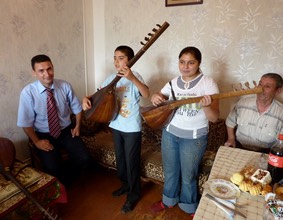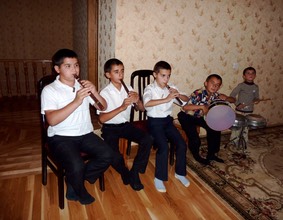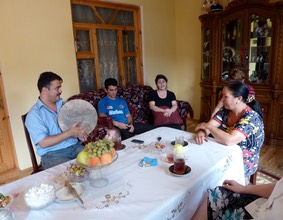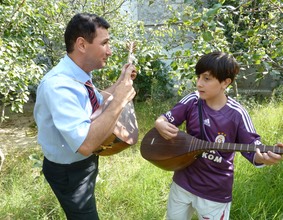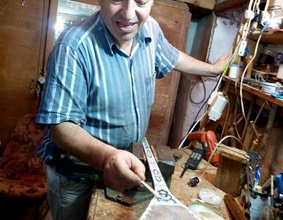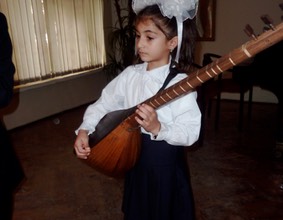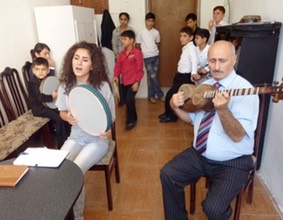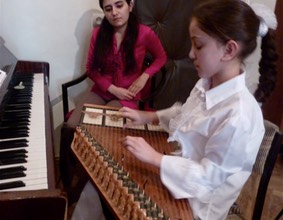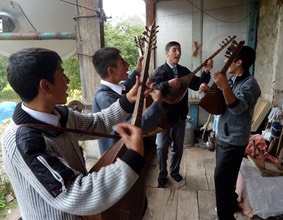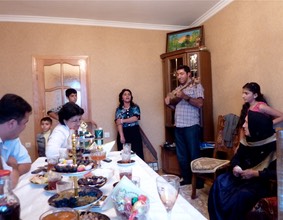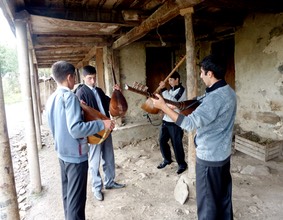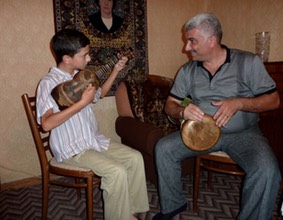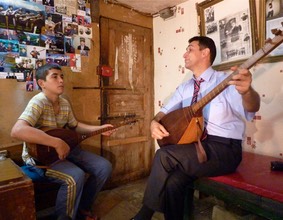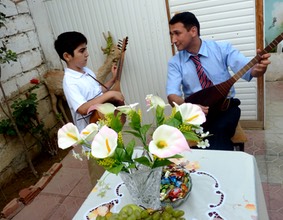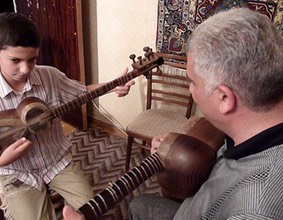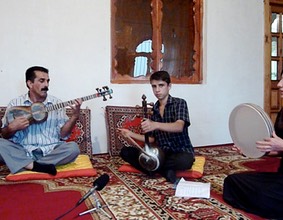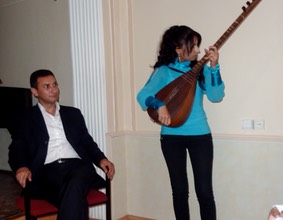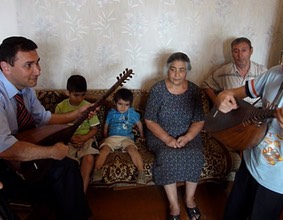Azerbaijan is a small secular country. Its capital Baku is on the western shore of the Caspian Sea. Azerbaijan was once on the Silk Route that connected Europe with Asia and this is reflected in its music.
The musical culture of modern Azerbaijan includes various kinds of oral traditional music, of which mughamat, a classical music, and the art of ashiq, a bardic tradition, are the two main genres.
Three musical instruments constitute the core of all contemporary mugham ensembles. The smallest ensemble is the “mugham-trio” which has been popular since the end of the 19th century. It consists of a khanende (a singer) who may also accompany him/herself on the qaval (a frame drum), and players of two instruments: tar (plucked lute) and kamancha (spike fiddle). The Tar holds a special position among Azerbaijan's national instruments.
The ashiq is a poet, composer and performer who plays the saz (a long-necked folk lute); the ashiq is a narrator and an actor-improviser, and sometimes also dances. “The ashiq holding a saz” is a figure that is connected with the most essential layers of national culture.
The arts of ashiq and mugham are fields of professional musical activity, but a great many amateurs also sing or play mugham and ashiq melodies. This is the fertile soil from which gifted children grow into professional musicians. Osmotic elements in the transmission of traditional music are more apparent in the ashiq environment than in the contemporary mugham tradition, but nevertheless they still remain vital for mugham practitioners.
The teaching methods of both ashiqs and mugham performers to a certain extent follow ancient tradition. Both the Mugham and ashiq repertoires were formerly passed down mainly from an ustad (master, teacher) to a shaqird (apprentice) in individual private lessons. Along with individual teaching there was a certain kind of institutional teaching of mugham practiced at big mosques, in the schools of rowzekhans, religious singers.
Today, the professional training of mugham performers is primarily institutional, but the process of instruction still continues in its traditional oral mode. Twice a week students from different grades meet together in lessons in which their teacher instructs each of them individually. The other students in the class, while waiting for their turns, are passively involved in the learning process.
Formal training of mugham performers began in 1922 by initiative of the great Azerbaijani composer Uzeyir Hajibeyov (1885-1948). Since then, it has been a part of the state musical education system in which students are also taught the basics of European music. This formal professional training of mugham performers in Azerbaijan, now almost 100 years old, has contributed to mughamat's enduring place in Azerbaijan’s cultural life.
The teaching of ashiq music has only recently begun to be institutionalised. Since the early 1990s, a few ashiqs, including Neymat Ghasimli with whom we have worked, began teaching the ashiq repertoire at primary music schools in Baku and Sumqayit. Currently, 67 of the 236 state primary music and art schools in Azerbaijan offer saz classes for the children aged from 7 to 16. The ashiq art is also taught at a few musical colleges in the country and also at the State University of Culture and Arts in Baku.
Sanubar Baghirova
Go to Participants in Azerbaijan (Mugam)
Go to Participants in Azerbaijan (Ashiq)
